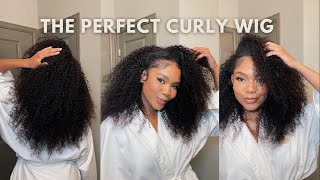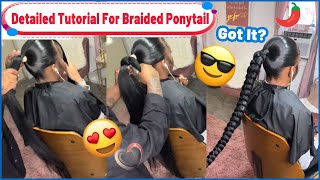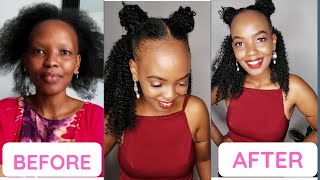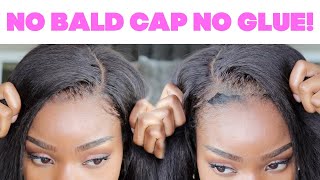New to Wigs
- Posted on 21 January, 2022
- Hot Topic
- By Kaylin

Taking a leap into the world of alternative hair may seem daunting; With differences in fiber type, cap construction, and fit, many aren’t sure where to begin. Our goal is to make the process easier by providing you with the necessary information to find your perfect hair!
Often times, those who are new to wigs want to start with something daring, bold, and completely different from the hair that they are used to. While this might seem fun an exciting, we generally find that choosing a style and color closest to your natural hair tends to be the best choice for your first wig. This will make the process of adjusting less of a shock and will have you feeling comfortable in no time!
DETERMINING YOUR CAP SIZE
Although about 90-95% of people will be able to wear an average cap size, there are plenty who need petite or large cap options! The only sure way to determine your cap size is by taking the following measurements:
Circumference
Ear to Ear
Front to Back
Before you grab the measuring tape, you’ll need to ensure that you are measuring properly. Patti makes the process a breeze by showing you exactly how to take your measurements in the video below.
Now that you’ve taken your measurements, you’ll need to determine your cap size. The following Jon Renau chart is a wonderful tool for comparing measurements.
NOTE: If your three measurements are not exactly matched to any one of the standard sizes, choose the wig size that is indicated by the largest measurement.

CHOOSING A FIBER TYPE
When it comes to fiber type, you’ll want to choose the one that best suits your lifestyle. Each fiber type will have a set of benefits and drawbacks and we will be listing them below to better help you narrow down on the right fiber for you!
REGULAR SYNTHETIC
Lasts 4-6 months with proper care
BENEFITS
Requires minimal styling and can often be directed to the desired look with just the fingertips
Has style-memory, meaning that the style is baked-in and will return after every wash
Does not frizz or lose style in humid environments
Permanent color – cannot be changed
Lower price point
DRAWBACKS
Cannot be styled with heat styling tools such as curling irons, flat irons, or hair dryers
Tends to be the shiniest of the fiber types – although shine can be reduced with dry shampoo and regular wear
Warmest of all the fiber types
In general, synthetic fiber is a gorgeous, shake-and-go fiber perfect for:
Those who want to spend the least amount of time on maintenance
Those who want a shake-and-go style
Those shooting for a lower budget
HEAT FRIENDLY SYNTHETIC
Lasts 2-6 months with proper care (depending on length)
BENEFITS
Less shine than regular synthetic, making it more natural looking overall
Can be styled with heat-styling tools such as curling irons and flat irons
Permanent color – cannot be changed
Lower price point
DRAWBACKS
Fiber is more delicate – can tangle and break down more easily
Higher maintenance than regular synthetic
Use of blow dryer is not recommended
Must only be brushed with a wide tooth comb
Longer styles tend to break down faster due to the friction of the ends against the fabric of sweaters, shirts, etc.
In general, heat friendly synthetic fiber is a gorgeous fiber type ideal for:
Those who want styling versatility
Those who want a less shiny fiber type
Those who are okay with a medium amount of maintenance
HUMAN HAIR
Lasts 6 months to a year with proper care
BENEFITS
Can be colored by a salon professional
Can be styled with heat styling tools such as a blow dryer, flat iron, or curling iron
Coolest of all the fiber types
Most natural looking and feeling
DRAWBACKS
Caring for the fiber is more time consuming
Tends to be at a higher price point than other fiber types
Reacts to environment just like bio hair (frizzing, losing style on humid days, etc)
Must be restyled after every wash
In general, human hair is a luxurious, natural fiber type perfect for:
Those who want styling versatility
Those who want to change the hair color
Those with plenty of styling time for a higher maintenance fiber
Those who don’t mind the investment
CHOOSING A CAP CONSTRUCTION
Just like fiber type, the ideal cap construction will depend on your personal needs! From constructions with the lowest density to ones for staying cool, we’ll dive right in to help you weigh the pros and cons!

OPEN CAP
A traditional cap construction where the hair is sewn into wefts, allowing for ventilation throughout. The wefts are hidden by short strands of fiber called permatease which give the style lift and volume.
BENEFITS
Coolest cap construction
Plenty of volume/lift
Typically higher density
A lower price range
DRAWBACKS
Part cannot be changed
Cap construction with the most permatease
Limited styling capabilities
Open Cap constructions are generally ideal for those who:
Live in warmer environments or need to stay cool
Desire an ample amount of volume/lift
Don’t need to change their part
Want something at a lower price range

MONOFILAMENT PART WITH OPEN CAP
The entire wig is comprised of wefts except for the part, in which each individual hair will be hand tied to a monofilament base to create the appearance of natural hair growth at the part
BENEFITS
Cool cap construction
Plenty of volume/lift
Natural appearance of growth at the part
Typically a lower price range
DRAWBACKS
Part cannot be changed
Limited styling capabilities
Mono Part cap constructions are generally ideal for those who:
Live in warmer environments or need to stay cool
Desire an ample amount of volume/lift
Don’t need to change their part
Want the appearance of natural hair growth at their part
Want something at a lower price range

MONOFILAMENT TOP WITH OPEN CAP
On the top section of the wig, each individual hair is hand tied to a monofilament base to create natural movement and the appearance of natural growth, while the sides and back of the wig are comprised of wefts. Considered the best of both worlds as a middle ground between open cap construction and a 100% hand tied cap construction.
BENEFITS
Can be parted anywhere
Hand tied top will move and swing like natural hair
Natural appearance of growth from the scalp on the top
Medium to lower density
Ventilation on the sides and back helps with staying cool
Typically a moderate price range
DRAWBACKS
Lower density on top, meaning that achieving ample volume will be more difficult
Mono Top cap constructions are generally ideal for those who:
Live in warmer environments or need to stay cool
Want to be able to change their part
Want more styling capabilities than an open cap wig
Want a lower density style than open cap constructions
Want the appearance of natural growth at the top of the scalp
Want hand tied features at a lower price range than 100% hand tied
Want a style with less permatease

100% HAND TIED
Each individual hair is hand tied to a monofilament base all over the wig to create natural movement and the appearance of natural hair growth from the scalp.
BENEFITS
Can be parted anywhere
All of the hair on the wig will move and swing like natural hair
Natural appearance of growth from the scalp
Typically a lower density than other cap constructions
More styling capabilities overall
Little to zero permatease
DRAWBACKS
Lower density style means less volume than other cap constructions
Warmest overall cap construction
Typically a higher price range
100% Hand Tied cap constructions are generally ideal for those who:
Want the most natural appearing cap construction overall
Want the widest range of styling capabilities
Want a lower-density style
Want a warmer cap construction
Want to be able to change their part
Want a style that gives the appearance of natural growth from the scalp
Need to see a run down on the differences between the constructions? Patti gives you up-close examples in the video below:
CHOOSING WIG FEATURES
In addition to the general cap constructions, there are a few features that are sometimes present on different wigs that might further influence your decision-making. Here are some of the features you might see and what they have to offer!
DOUBLE MONOFILAMENT
A monofilament base featuring a silk-like material which lines the inner side of the monofilament. Ideal for sensitive or irritated scalps.
POLYURETHANE
A thermoplastic polymer used as a base material in hair systems and wigs, either fully or partially throughout the base, allowing the base to be bonded to the scalp with wig tape or adhesive
LACE FRONT
The front portion of a wig or topper where the fibers are hand tied to lace, giving the illusion of naturally growing hair. Can be present on any cap construction type.
FRENCH DRAWN
Hand Tied style where the knots are tied to swiss lace between two layers of glass silk, giving the overall appearance of hair follicles growing from the scalp. Glass silk is smooth against the skin.
CHOOSING A COLOR
So, you’ve finally picked the style you love, but what about the color? Online wig shopping can make the task of choosing the right color seem daunting. Each brand will have entirely different set of colors and sometimes digital swatches don’t give a good depiction of highlights, color graduation, or rooting.
Don’t fret! We have a few different options for helping you narrow down your color selection!
LET US HELP!
Aren’t sure where to begin? Send a photo to us and we can help you narrow down on a few selections!
While taking or finding photos to email us, we recommend:
A photo in indoor lighting
A photo in natural lighting
Photos far enough away to see most of the hair (close up photos of the strands make it difficult to determine your hair color)
Once you have the photos, email them to [email protected] along with the styles that you are looking at and any additional questions you might have! Within one business day, our customer service team will email you with different color recommendations!
PATTI'S PEARLS 360 DEGREE VIEWS
Having trouble envisioning that digital color swatch on a full wig or topper? Patti’s Pearls 360 Degree Views Youtube channel features a collection of various wigs in different colors so that you can see that color in a full piece! Although you might not be able to find a video of the exact style you are looking at in the color you’re interested in, you can typically find a few videos of the color in other styles, which is still more beneficial than a digital color swatch!
Not sure how to navigate the channel? Just follow the directions below:
1. Visit the Patti's Pearls 360 Degree Views channel by clicking here.
2. Click on the magnifying glass icon toward the right hand side of your screen, it should look something like the image below:

3. Type the the color code you are interested in into the search bar. For example, if you are interested in the Jon Renau color 12FS8 Shaded Praline, just type “12FS8” into the search bar and hit the “Enter” button.
4. You will see a list of the color 12FS8 in various different Jon Renau styles similar to the one pictured below. We typically recommend looking at a few different videos to get the best idea of the color, as color can vary depending on different lighting situations.

COLOR RING LOAN PROGRAM
Are the videos just not cutting it? Sometimes holding a physical color swatch and being able to compare it to your skin tone and bio-hair is the best choice when selecting the right color! Fortunately, Wigs by Patti’s Pearls has a wonderful Color Ring Loan Program that makes this process a breeze!
Read more about Patti’s Color Ring Loan Program by clicking here.
CHOOSING A WIG LINER
Hurray! You’ve selected your first wig and are ready to move on to basic accessories to make wig-wearing more comfortable. We typically recommend wearing a wig liner beneath your wig to help hold bio hair in place as well as to create a comfortable barrier between your scalp and the wig.
Like with most things in the world of wigs, there are a variety of different options for wig liners! Nylon, fishnet, cotton, bamboo viscose – you might be scratching your head trying to determine which liner is right for you!
At the link below, we discuss each of the different types of liners as well as the benefits and drawbacks of each!
Choosing a Wig Liner
CARING FOR YOUR WIG
Once you have selected a wig, you’ll want to make sure that you choose the appropriate care products for the fiber type that you’ve purchased! Below we compiled a list of products, care manuals, and instructional videos for each fiber type that show you exactly what you need and how to use it!
Care Products, Care Guide, and Instructional Videos for Regular Synthetic Fiber
Care Products, Care Guide, and Instructional Videos for Heat Friendly Fiber
Care Products, Care Guide, and Instructional Videos for Human Hair Fiber




